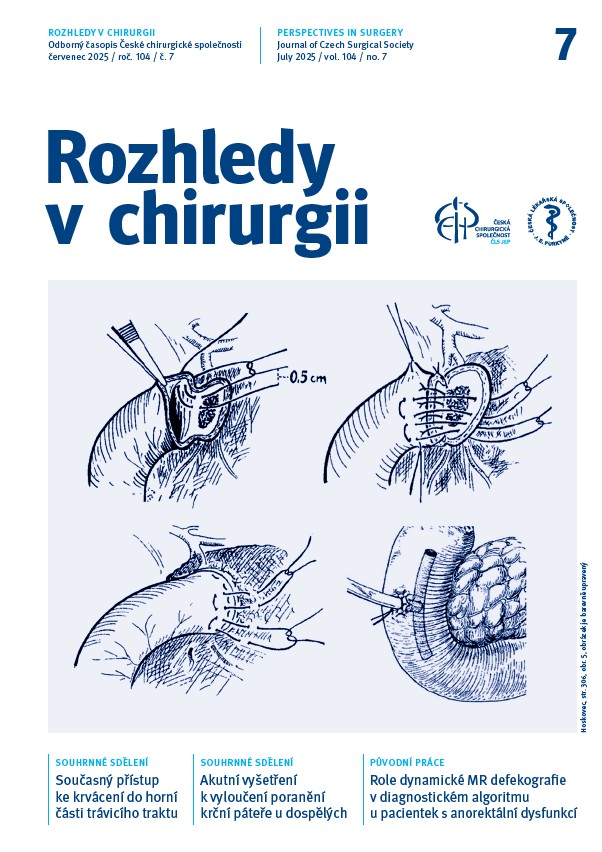Abstract
Introduction and aim: For a correct assessment of anorectal dysfunction, adequate physical and imaging examinations are required. The aim of our study was to evaluate the use of MRI defecography in patients with anorectal dysfunction. Its comparison with anorectal manometry, standard clinical examination, and patients’ subjective perceptions.
Type of study: An observational, retrospective analysis.
Methods: Forty patients with symptoms of anorectal dysfunction referred to a colorectal clinic between 9/2022 and 5/2023 participated in the study. All underwent proctological examination, anorectal manometry and MRI defecography. The results of the study were statistically processed with Statistica 12.0 software.
Results: The average age of the patients was 55 years. Primary complaints were obstipation in 60% of patients, fecal incontinence in 33%, 1 patient had proctalgia and 2 patients presented for rectal prolapse. On clinical examination, 20% of patients had rectoanal intussusception and 15% had complete rectal prolapse. A total of 36% of patients reported concomitant urinary incontinence. Pelvic floor drop in the anterior compartment was also demonstrated in patients who had physiological internal sphincter function according to anorectal manometry, however, due to the small sample size, only a trend was observed and statistical significance of these differences was not reached (P = 0.109). Patients without evidence of obstructive defecation syndrome on anorectal manometry had complete rectal emptying on MRI defecography (P = 0.0598).
Conclusion: Dynamic MRI defecography can identify anatomical and functional abnormalities of the pelvic floor. The main use of the method is in the detection of multi-compartment pathology. Multidisciplinary collaboration is required to interpret the results and establish an accurate diagnosis.
doi: 10.48095/ccrvch2025275


